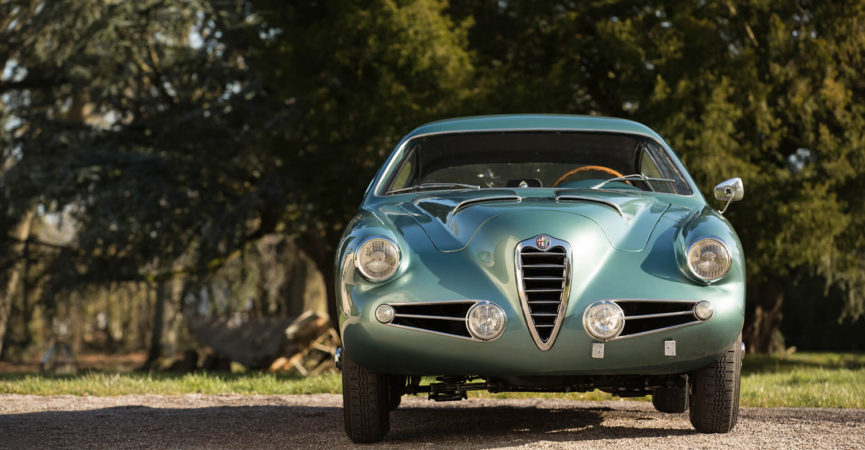
The 10 Most Beautiful Alfa Romeo Road Cars Produced
Italians have obviously long been known for designing beautiful things on wheels. Even when the vehicle manufacturer isn’t Italian, chances are, if it stirs emotion, creates want and just plain awes the senses, there’s probably an Italian hiding in the shadows with a pencil and a sketchbook, a hammer and a sheet of aluminum or some clay and a brilliant idea somewhere close at hand. In a lot of ways, Alfa Romeo is the quintessential Italian marque and par the course, over the course of the brand’s history, they have experienced no shortage of drama. Between fire sales, corporate and government rescue buyouts, world wars and generally dying and being brought back to life multiple times, they have also triumphed at show and in the media, dominated on the track and brought to light some of the world’s most intriguing and influential personalities. The fact is, they speak their own language, and touch you in a way that very few others can. There is almost no automaker that get under your skin like Alfa Romeo does and here are ten of their most beautiful creations…….
 10. Alfa Romeo Spider Series II
10. Alfa Romeo Spider Series II
As successor to the Giulia Spider, the Spider remained in production for almost three decades. The first three series were assembled by Pininfarina in Grugliasco and the fourth series in San Giorgio Canavese. The last Spider was manufactured in April 1993. In 1970, the first significant change to the exterior styling was introduced on the 1750 Spider Veloce, with the original’s distinctive elongated round tail revised to a more conventional Kamm tail, improving luggage space. Numerous other small changes took place both inside and out, such as a slightly different grille, new door handles, a more raked windscreen, top-hinged pedals and more stylish interior trim.
Why it’s here:
Might as well start this out with a little controversy, right? Although I definitely appreciate the Series I “Duetto” cars, I have always liked these better. A seemingly much more developed version, in my opinion, the modified Kamm tail, with its slight lip on the edge of the truck lid and its Miura’esque square taillights have always been a breath-taking improvement that doesn’t nearly get the credit it deserves. Additionally, the interior is a major step up from the previous versions paddle boat styling, which I feel is ultimately the Duetto’s biggest shortcoming. The interior on the Series II, with its bulbous gauge pods and slightly claustrophobic center dash section has always reminded me of an E-type that somebody took day drinking in Milan.
 9. Alfa Romeo Montreal
9. Alfa Romeo Montreal
The Alfa Romeo Montreal, produced from 1970-1977 was introduced as a concept car in 1967 at Expo 67, held in Montreal, Quebec, Canada. The concept cars were displayed without any model name, but the public immediately took to calling it “Montreal”. Originally a 2+2 coupe using the 1.6-litre engine of the Alfa Romeo Giulia TI and the short wheelbase chassis of the Alfa Romeo Giulia Sprint GT, its bodywork was a creation of Marcello Gandini at Bertone. The first production car, was shown at the 1970 Geneva Motor Show and was quite different from the original, using a 2593 cc 90° dry-sump lubricated, cross-plane V8 engine and Alfa’s infamous SPICA fuel injection, coupled to a five-speed ZF manual gearbox and a limited-slip differential. The Montreal’s 2.8-liter V8 was derived from a previous 2-liter V8 used in the 33 Stradale and in the Tipo 33 sports prototype racer. The chassis and running gear of the production Montreal were taken from the Giulia GTV coupé and comprised double wishbone suspension with coil springs and dampers at the front and a live axle with limited slip differential at the rear. Since the concept car was already unofficially known as the Montreal, Alfa Romeo kept the model name into production.
Why it’s here:
Exquisitely styled from front to back, the Montreal definitely takes cues from previous Bertone designs, but cranks the volume to 11. Adorned throughout with scoops, bulges and slats galore, highlights include an over the top front end with four headlamps partly covered by unusual grill type covers, that retract when the lights are switched on. Perhaps the most striking feature of the Montreal remains the six slats located behind each door, which in my opinion, remain one of the most heavenly slices of automotive design ever created.
 8. Alfa Romeo Giulia Coupes
8. Alfa Romeo Giulia Coupes
The Alfa Romeo Giulia Sprint GT was the first Giulia sport model introduced and was manufactured from 1963 to 1965. It was revealed at a press event held at the then newly opened Arese plant in September of 1963 and displayed later the same month at the Frankfurt Motor Show. In its original form, the Bertone body is also known as “Scalino” (step) or “step front”, because of the leading edge of the engine compartment lid which sat 1/4 an inch above the nose of the car. Later versions included a revised engine, with slightly more power and torque, better interior fittings and small changes to the exterior trim.
Why it’s here:
The unquestionable darling of the hipster elite and the social influencer crowd, Giulia Coupes are a masterpiece of simplicity and subtlety that is nearly unmatched anywhere else across the automotive landscape. Every centimeter of these cars is a tribute to thoughtful design, from the graceful line creeping from the truck lid, over the rear window, to the sharp drop going over the hood and on to the Giulia’s gorgeous and highly distinctive front end. The symphonic sounds created under the hood certainly don’t hinder the experience either. There’s really only one way to describe these cars: absolutely delightful.
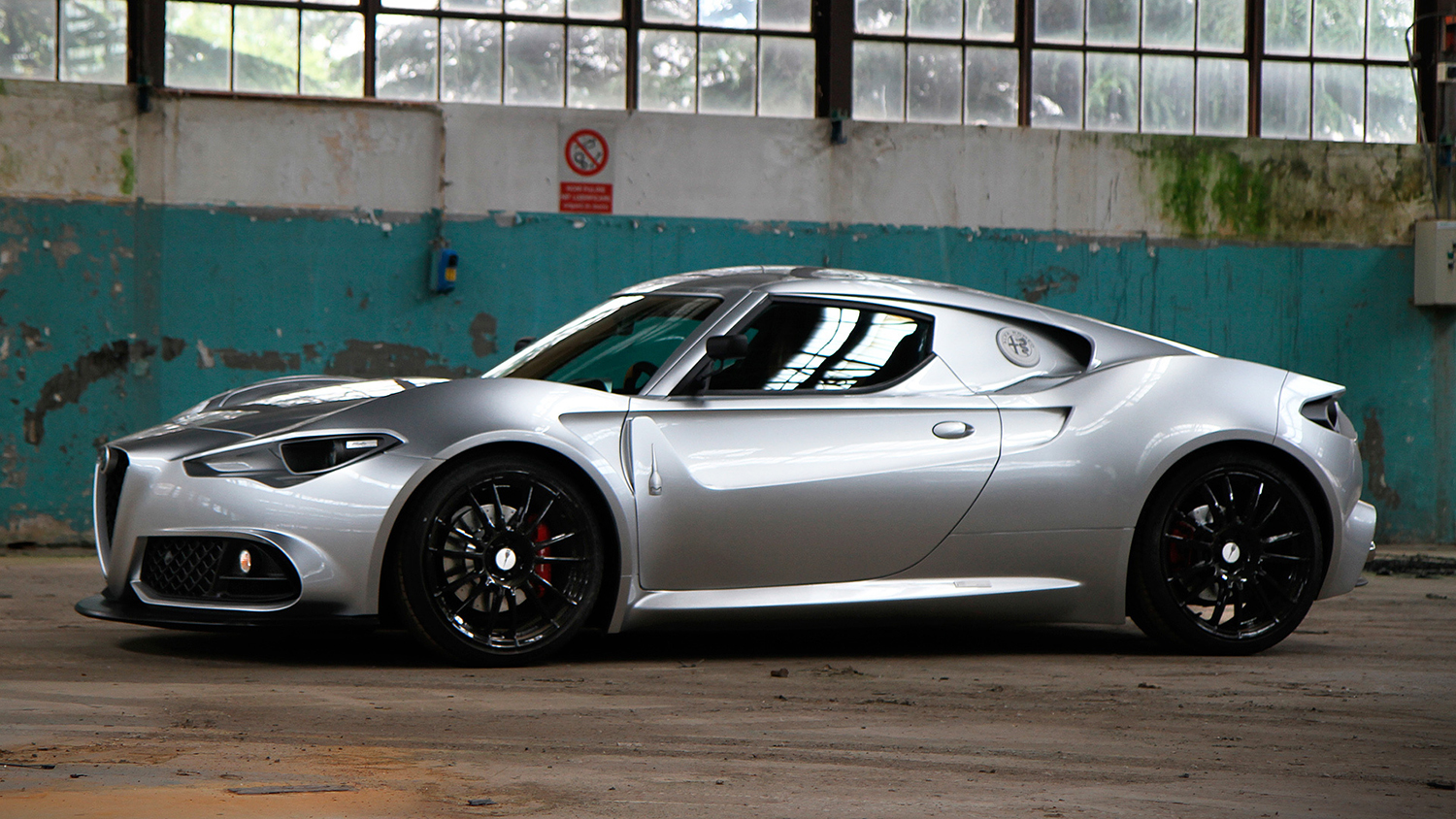 7. Alfa Romeo 4C Mole Costruzione Artigianale
7. Alfa Romeo 4C Mole Costruzione Artigianale
The Alfa Romeo 4C, alongside the fabulous 8C, has helped revitalize the Alfa Romeo brand in the United States and beyond. Built on a superb carbon-fiber tub and powered by a 1,750-cc turbocharged 4-cylinder engine, it is both exciting to drive and wonderful to look at. In 2018, former FCA CEO Sergio Marchionne declared that the 4C would be discontinued with no successor announced. Seeing an opportunity to create something truly incredible, Up Design alongside Adler Group created what they thought a potential successor could look like. The Mole Costruzione Artigianale, is a truly unique coachbuilt creation in the finest Turinese tradition and has since received worldwide acclaim for its stunning appearance.
Why it’s here:
While I’m a big fan of everything Alfa is currently offering on our shores, only one modern Alfa appears on this list and it’s the Mole Costruzione Artigianale. Most would expect the 8C (or maybe the Viper inspired TZ3) to occupy this spot, but for me it just doesn’t check as many boxes from an appearance standpoint as the 4C does. From the initiation of the Launch Edition on, the 4C has so much more going on with it than the 8C ever did and the Mole, despite not being an official Alfa design, goes along with Alfa’s rich tradition of incredible coachbuilt offerings and is the ultimate version of modern Alfa Romeo (up to this point).
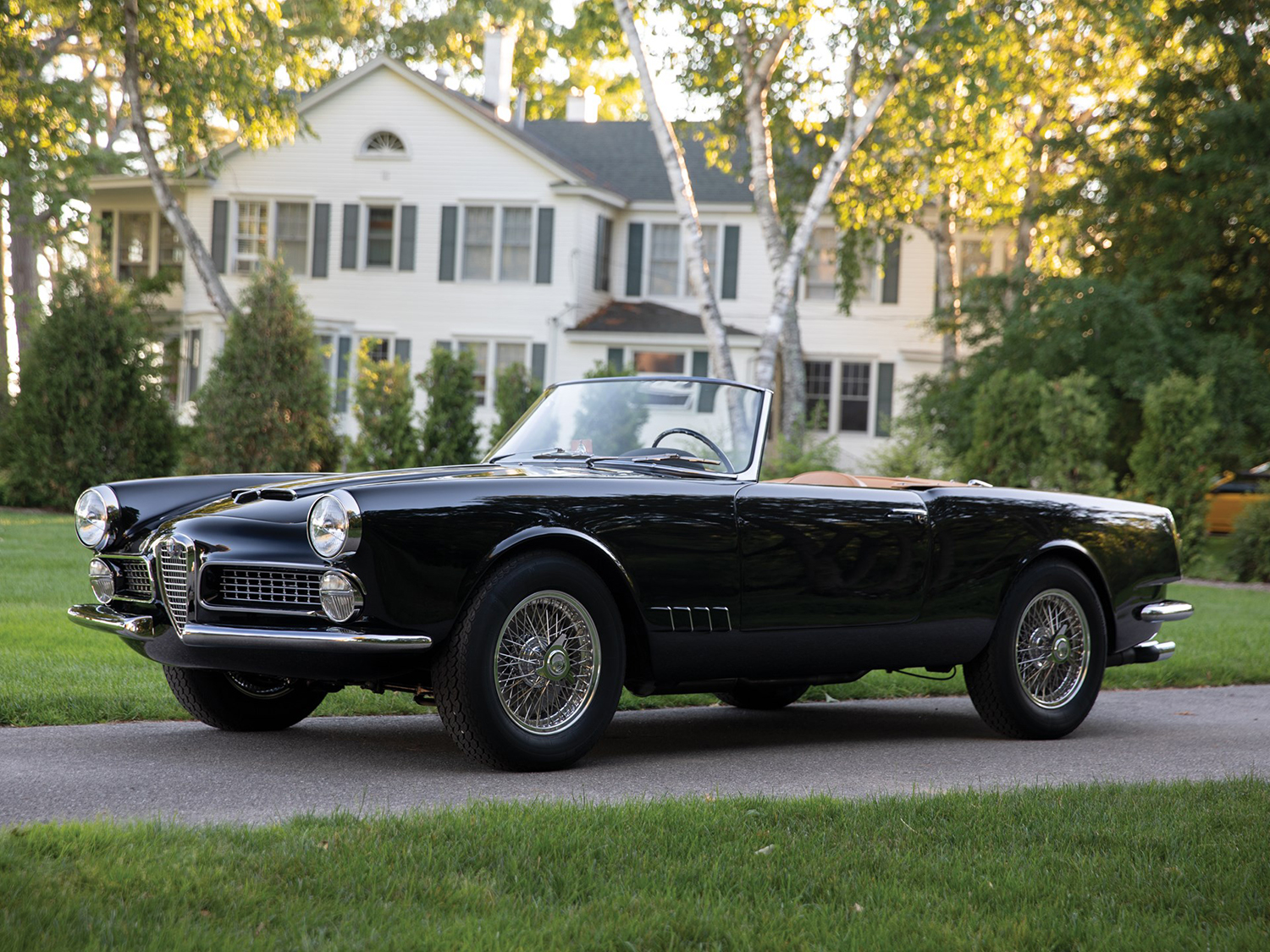 6. Alfa Romeo Giulietta Spider 2000 by Touring
6. Alfa Romeo Giulietta Spider 2000 by Touring
The 2000, also known as the 2-Liter, was a luxury tourer designed almost specifically for the American market. The recipient of an uprated Sprint engine, it featured an 8.5:1 compression ratio and dual carburetors, resulting in it producing 115 horsepower at 5,900 rpm. Larger than more recent, previous models, the 2000 offered an extended wheelbase of a full 10 inches, which opened up its cabin and offered a feel more aligned with even the most expensive offerings of the day (mainly Ferrari’s 250 series). Introduced at the 1957 Turin Auto Show, the Alfa Romeo 2000 Spider is arguably one of the most iconic cars ever produced by Alfa Romeo or Carrozzeria Touring and it is certainly one of the most beautiful. Overall, just 3,443 were produced during its run between 1958 and 1962.
Why it’s here:
Absolutely jewel like, the 2000 shines from bumper to bumper like very few others from its era (or any other for that matter). A wonderful mix of aggressive and subdued, the soft curves of its headlights and rear section are offset perfectly by Carrozzeria Touring’s array of hood and fender scoops and it results in a form that remains intoxicating.
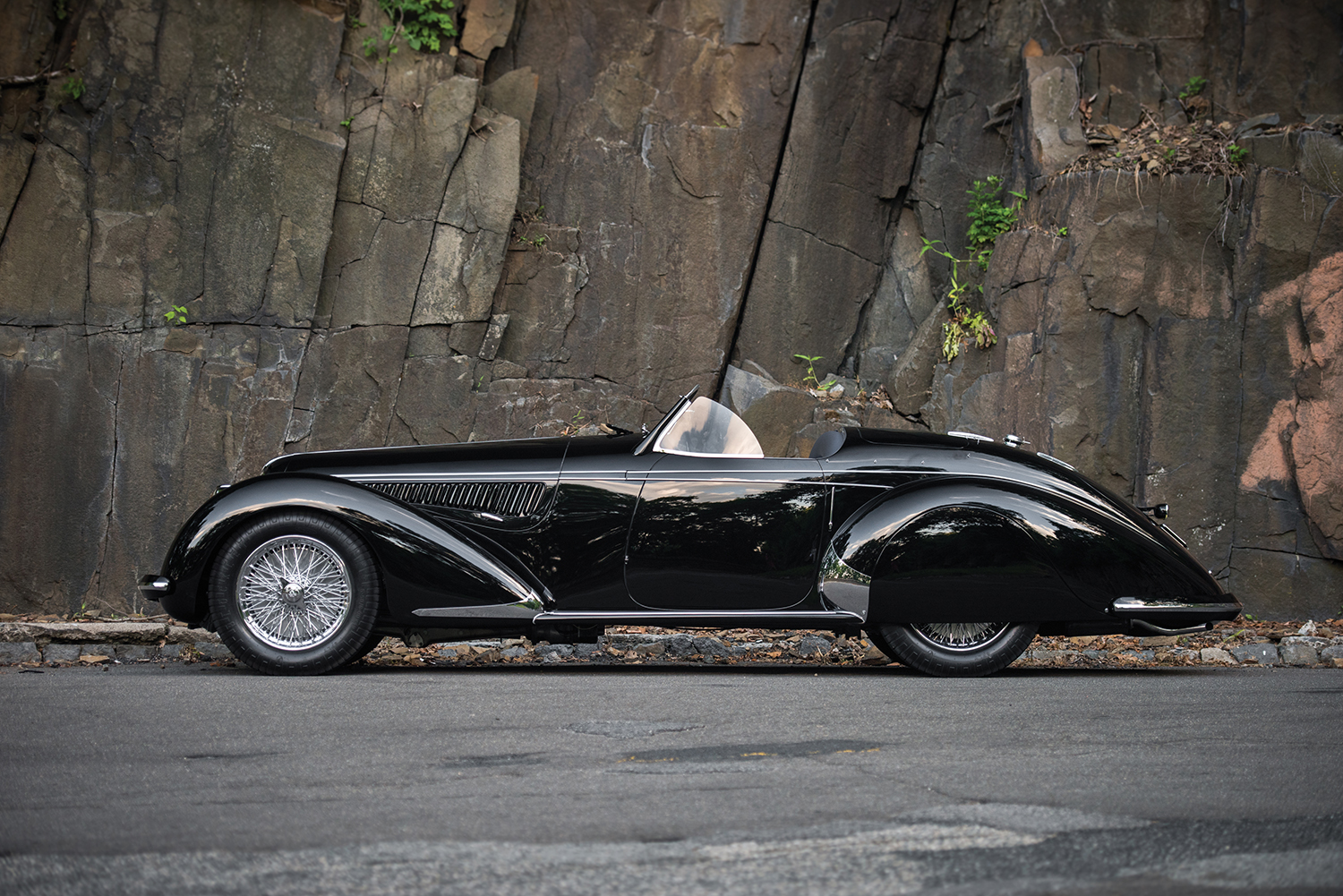 5. Alfa Romeo 8C 2900
5. Alfa Romeo 8C 2900
The Alfa Romeo 8C was originally a range of Alfa Romeo road, race and sports cars in the 1930s. The 2900 was originally designed to compete in sports car races, including Mille Miglia in particular. Set on the 8C 35 Grand Prix racing chassis, it had an inline 8-cylinder 2.9-litre engine using two Roots type superchargers fed by two updraught Weber carburetors and fully independent suspension. The 8C 2900A was shown to the public at the 1935 London Motor Show and was advertised for sale there. 10 2900As were built, 5 in 1935 and 5 in 1936. The 8C 2900B began production in 1937 with some concessions being given to comfort and reliability. The 2900B chassis was available in 2 wheelbases and the 2900B had 19-inch rims fitted with 17-inch hydraulic drum brakes. 32 2900Bs were built in regular production, 10 in 1937, and 22 in 1938. Another 2900B was assembled from parts in 1941. Most of these cars were bodied by Carrozzeria Touring, although a few were bodied by Pininfarina.
Why it’s here:
Regardless of what version it is, the 8C 2900 is arguably one of the most visually impactful pre-war cars. Featuring an overdose of jaw dropping art deco goodness, ultra stylish rear wheel covers and dramatic arches on all around, the 2900 has also proven to be one of the most valuable, breaking the bank at premier auction events worldwide, every time they come on offer. Most recently, a stunning 1937 2900B was also selected Coppa d’Oro Villa d’Este at the 2019 Concorso d’Eleganza Villa d’Este in Cernobbio, Italy.
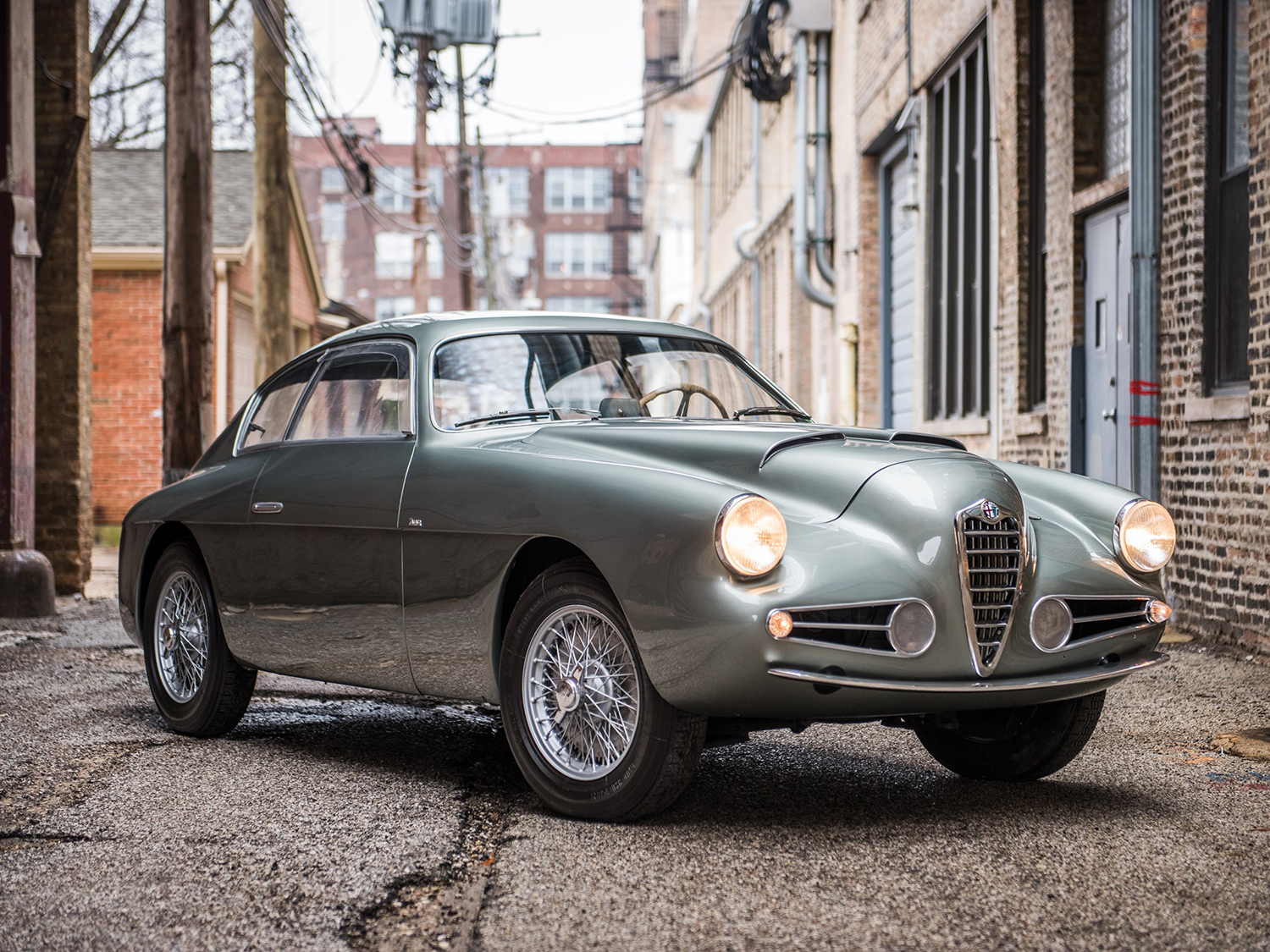 4. Alfa Romeo 1900C SS Coupe Zagato
4. Alfa Romeo 1900C SS Coupe Zagato
As a racing enthusiast, Elio Zagato was intrigued by the promise of Alfa Romeo’s sporting 1900C platform and its Weber and 5-speed equipped 115 bhp, 1,975 cc DOHC inline four-cylinder engine. In September 1954, he sourced a 1900C chassis and clothed it with lightweight aluminum coachwork. The new body featured a sculpted nose and bulged hood with dual inlets designed to clear the higher-profile Weber carburetors. With over 21,000 1900-series cars built among many variations, only 854 were the ultimate specification 1900C SS. Of that, only 39 wore the exclusive Zagato bodies. In addition to their exquisite beauty, they were also the best performing, due to Zagato’s ultra-lightweight alloy body panels.
Why it’s here:
Curves galore, the pride of true craftmanship is demonstrated everywhere on the 1900C SS Zagato. This combined with the sloping rear section and carefully crafted hood scoops makes for a truly memorable and highly stylish automotive achievement. As such, the 1900C SS Zagato has since become regarded as one of his finest designs and is held to the highest esteem by the worlds most sophisticated collectors.
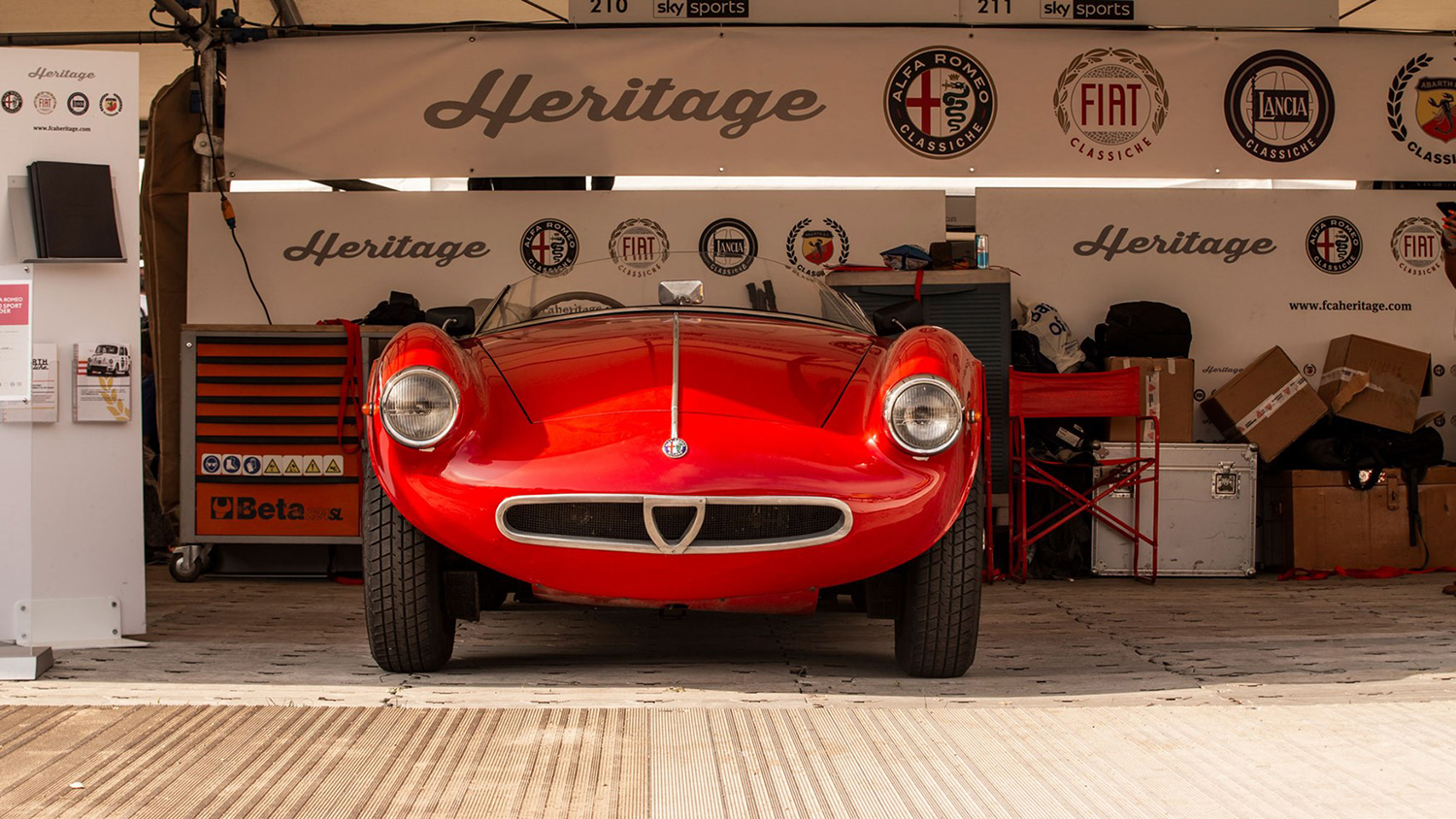 3. Alfa Romeo 2000 Sportiva
3. Alfa Romeo 2000 Sportiva
The Alfa Romeo 2000 Sportiva is a 2-litre sports car made by Alfa Romeo in 1954. Developed to be a very small production and intended to satisfy Alfa’s most sporting clients, it was designed to be used in high-speed grand touring or for racing in the sport class. Overall, just four were produced – 2 coupes and 2 spiders. Both bodies were designed by Franco Scaglione at Bertone. Today a metallic silver coupe and a red spider are part of the Museo Storico Alfa Romeo Collection, located in Arese. Some traits of the coupe, such as the wrap-around rear window and rear end treatment, were later seen on the mass-produced Alfa Romeo Giulietta Sprint, also by produced by Bertone.
Why it’s here:
Ok, so I am somewhat taking the easy way out on this one. There’s a variety of coachbuilt options that could have very easily occupied this spot, as well as the legendary and much more historically significant Disco Volante (another spoiler alert: it’s not on the list) that proceeded the Sportiva, but yet here the Sportiva sits. Why? Despite the clear differences between spider and coupe, overall, both factory produced versions of the super 1900 encompass all the good stuff from all the coachbuilt cars and leave out a bunch of the eccentricity demonstrated in the Disco Volante. To make a long story short, it possesses a certain level of restraint that puts it in a league above the rest.
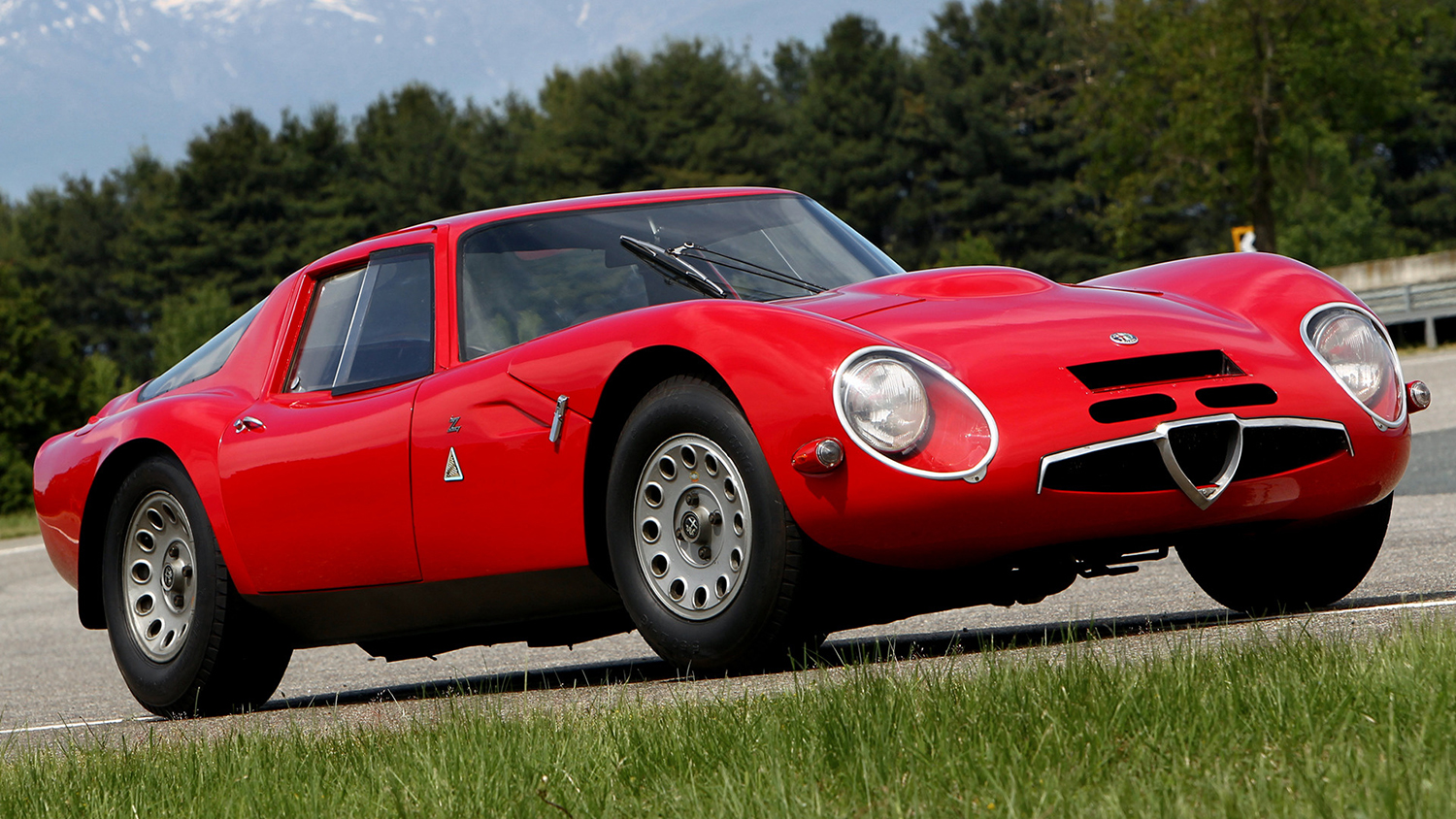 2. Alfa Romeo TZ Series
2. Alfa Romeo TZ Series
The Alfa Romeo Giulia TZ (also known as the Alfa Romeo TZ or Tubolare Zagato) was a sports and racing car manufactured by Alfa Romeo from 1963 to 1967. Offered over two generations, the TZ1 was available from 1963-1965 as both a competition car and a homologation street version that was limited to just 100 examples. The TZ2 (pictured), was built from 1965 through 1967. The TZ1 was developed in conjunction with Autodelta, a company led by Ex-Ferrari engineer Carlo Chiti. It featured a 1,570cc twin cam engine and other mechanical components shared with the Alfa Romeo Giulia and carried a 105 series chassis number, but was a purpose-built sports racing car, with a tubular spaceframe chassis, light all-aluminum bodywork, disc brakes and independent suspension. In 1965 the car was updated with new fiberglass bodywork also provide by Zagato. It produced lower drag and a reduced weight of 1,370 lbs. The TZ2 was only built as racing version and was equipped with an Autodelta-prepared twin plug, dry sump lubrication 1,570 cc DOHC straight-4 engine producing around 170 bhp (10 more than the TZ1) at 7000 rpm. Just 12 examples of the TZ2 were ever constructed.
Why it’s here:
Admittedly, I’m cheating a little bit here. This article is about road cars and the TZ2 is a race car. Yes, I’m grouping in the TZ1 in order to use the TZ2, but can you blame me? You can’t have an honest conversation about beautiful Alfa Romeo’s without referencing the TZ2. Not only should it be on everybody’s most beautiful Alfa list, but it also probably deserves strong consideration for everybody’s most beautiful everything list. It without question, is Alfa Romeo’s GTO.
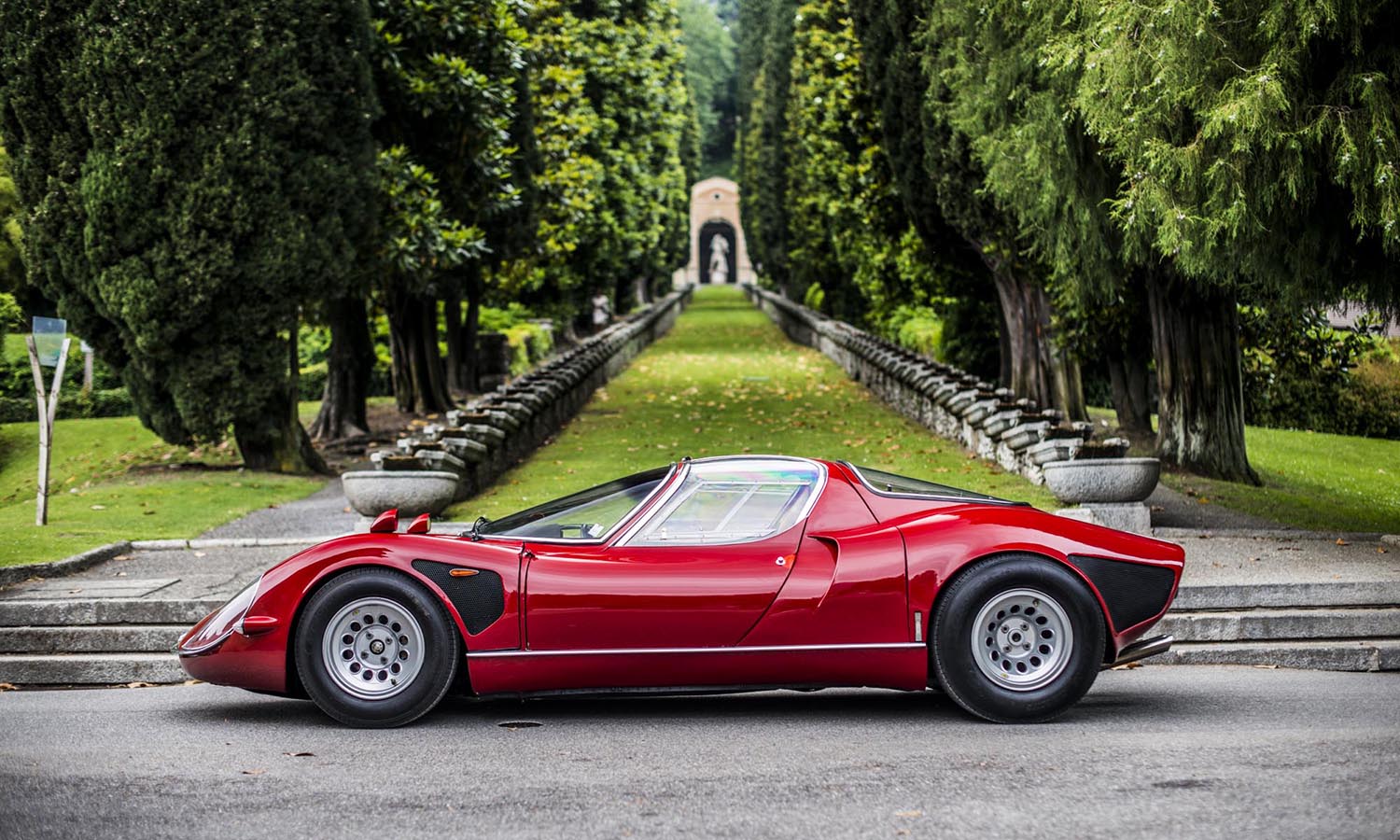 1. Alfa Romeo 33 Stradale
1. Alfa Romeo 33 Stradale
The 33 Stradale is a mid-engined sports car built by Alfa Romeo between 1967 and 1969. “Stradale” (Italian for “road-going”) is a term often used by Italian car manufacturers to indicate a street-legal version of a racing car and indeed, the 33 Stradale was derived from the Tipo 33 sports prototype. Overall, 18 examples were “allegedly” produced. Designed by Franco Scaglione and built by Carrozzeria Marazzi, the first prototype was built at Autodelta, side by side with the Tipo 33 “Periscopica” race car for 1967. Another magnesium bodied prototype, planned for street racing, was started by Scaglione. However, this was not finished until 1968 by Marazzi. Marazzi claims to have built 18 chassis. 5 of them were used for 6 concept cars (one chassis was used twice) by Pininfarina, Bertone and Giugiaro/ItalDesign. 8 are confirmed with Scaglione’s beautiful bodies. The rest are experimental or unconfirmed at this point. The race-bred engine bore no relation to the mass-produced units in Alfa’s more mainstream vehicles. However, the engine is closely related to the V8 of the Alfa Montreal, albeit with smaller capacity and in a much higher state of tune. Because every Stradale is hand built and unique the power levels can vary by car. For example, the first production Stradale has factory datasheet that claims 243 bhp at 9,400 rpm with a “street” exhaust and 254 bhp with open exhaust. Others claimed as much 270 or as little as 230 bhp. Like on the racing examples, the transmission was a six-speed Colotti transaxle gearbox.
Why it’s here:
Think for a second, about what else was around during this era. If the Miura looked impressive going down the street, this thing must have been like a straight up spaceship! Hopelessly beautiful and endlessly exotic, the 33 Stradale is a showstopper from every conceivable angle. The only place it could possibly reside on this list is number 1. Truly one of the most incredible automotive designs of all time!

Darin Roberge is President of Motorwerks Marketing and is a Marketing and Media Consultant in the Specialty Automotive and Live Events industries. Darin has been named a Business Trendsetter by Arizona Foothills Magazine, is a two-time nominee to Phoenix Business Journal’s 40 Under 40 list and is one of Sports Car Market Magazine’s 40 Under 40. Learn more about Darin at www.MotorwerksMarketing.com
